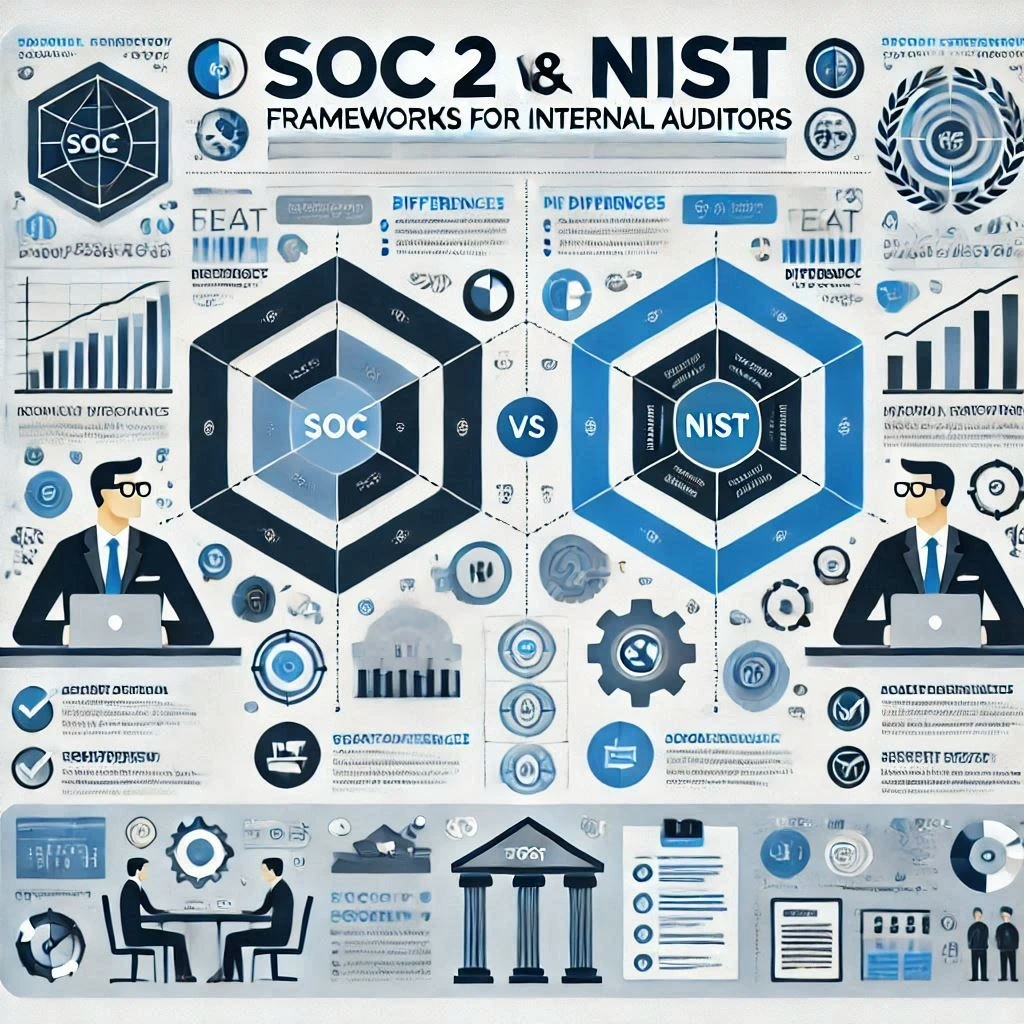Introduction
Operational risk is a critical concept that refers to the potential for loss resulting from inadequate or failed internal processes, people, systems, or external events. This type of risk is particularly significant as it can impact an organization’s ability to achieve its objectives and maintain compliance with regulations. Understanding and managing operational risk is essential for risk management professionals, especially in the context of internal audits, where thorough assessments can help identify vulnerabilities and enhance organizational resilience.
With the rise of remote work, a trend accelerated by recent global events, organizations are increasingly navigating a landscape where traditional operational frameworks are challenged. Remote and hybrid work environments have become commonplace, necessitating a shift in how risks are assessed and managed. According to recent observations, the prevalence of remote work has transformed the dynamics of operational risk, introducing new challenges that require innovative solutions.
As organizations adapt to this new normal, it is imperative to modify existing operational risk assessment templates to align with the unique characteristics of remote work. This adaptation is not merely a matter of convenience; it is essential for ensuring that risk assessments remain relevant and effective in identifying potential threats in a virtual environment. By tailoring risk assessment templates to address the specific dynamics of remote work, risk management professionals can better safeguard their organizations against emerging risks and enhance their overall operational resilience.
Understanding Operational Risk in Remote Work
Operational risk assessment has become increasingly complex. As organizations adapt to these new work arrangements, it is crucial for risk management professionals to recognize and address the unique operational risks that arise. Here are some key points to consider:
- Key Operational Risks: Remote work introduces several operational risks that differ from traditional office environments. Notable risks include:
- Cybersecurity Threats: With employees accessing company systems from various locations, the risk of cyberattacks increases. This includes phishing attempts, data breaches, and insecure home networks that can expose sensitive information [6].
- Communication Breakdowns: The absence of face-to-face interactions can lead to misunderstandings and miscommunications among team members. This can hinder collaboration and affect project outcomes [12].
- Employee Engagement Issues: Remote work can result in feelings of isolation among employees, which may impact morale and productivity. Maintaining engagement and fostering a sense of belonging is essential for a motivated workforce [12].
- Altered Risk Landscapes: The shift to remote work has transformed traditional risk landscapes, introducing new vulnerabilities that organizations must navigate. For instance, the reliance on digital communication tools increases the risk of technical failures and data loss. Additionally, the lack of physical oversight can lead to lapses in compliance and operational controls [10].
- Continuous Monitoring and Adaptation: Given the dynamic nature of remote work, it is vital for organizations to implement continuous monitoring of their operational risk assessments. Regularly updating risk assessments allows organizations to identify emerging threats and adapt their strategies accordingly. This proactive approach fosters resilience and ensures that risk management practices remain effective in a rapidly changing environment [10][11].
By understanding these unique operational risks and adapting risk assessment templates accordingly, risk management professionals can better navigate the challenges posed by remote work. This will not only enhance organizational resilience but also safeguard the well-being of employees and the integrity of business operations.
Evaluating Your Current Operational Risk Assessment Template
It is crucial for risk management professionals to adapt their operational risk assessment templates to effectively address the unique challenges posed by virtual environments. This section aims to guide you in evaluating the adequacy of your existing templates, ensuring they are equipped to identify and mitigate risks associated with remote work.
Review Current Risk Assessment Templates
Begin by conducting a thorough review of your current operational risk assessment templates. This process should focus on identifying any gaps that may arise specifically from remote work scenarios. Consider the following aspects:
- Technology Dependence: Assess how your template accounts for risks related to technology failures, cybersecurity threats, and data privacy issues that are more pronounced in a remote setting. The shift to remote work has increased reliance on digital tools, making it essential to evaluate the robustness of your controls in this area [12].
- Communication Barriers: Identify any potential risks stemming from reduced face-to-face interactions. Your template should address how communication challenges can impact collaboration and decision-making processes [10].
- Work Environment Variability: Evaluate how your template considers the diverse work environments of employees, including home office setups that may not meet organizational standards for safety and productivity [11].
Importance of Stakeholder Input
Incorporating stakeholder input is vital when evaluating existing processes. Engaging with various stakeholders, including team members, IT personnel, and management, can provide valuable insights into the effectiveness of your current risk assessment template. Their perspectives can help identify:
- Real-World Challenges: Stakeholders can share firsthand experiences of risks encountered in remote work, which may not be captured in traditional templates [9].
- Feedback on Controls: Gathering feedback on the effectiveness of existing controls can highlight areas for improvement and adaptation to the remote work context [15].
Criteria for Assessing Effectiveness
To ensure your operational risk assessment template is effective in a virtual environment, consider the following criteria:
- Comprehensiveness: The template should cover a wide range of operational risks, including those specific to remote work, such as cybersecurity threats and compliance issues [11].
- Flexibility: It should allow for adjustments based on the changing nature of remote work and the specific needs of your organization. This adaptability is crucial for maintaining relevance in a dynamic environment [14].
- Clarity and Usability: Ensure that the template is user-friendly and clearly outlines the steps for conducting assessments. A well-structured template will facilitate easier adoption and implementation by team members [12].
- Regular Updates: Establish a process for regularly reviewing and updating the template to reflect new risks and changes in the operational landscape. Continuous improvement is key to effective risk management [13].
By systematically evaluating your current operational risk assessment template against these criteria, you can enhance its effectiveness in navigating the challenges of assessing risks in a virtual environment. This proactive approach will not only safeguard your organization but also foster a culture of resilience in the face of evolving operational challenges.
Key Components of an Adapted Operational Risk Assessment Template
Operational risk assessments must be tailored to address the unique challenges posed by virtual environments. Here are essential elements to include in a remote work-focused risk assessment template:
- Remote-Specific Risk Categories:
- Technology Risks: Identify potential vulnerabilities in the technology infrastructure that remote employees rely on, such as software failures, cybersecurity threats, and inadequate IT support. Assess the impact of these risks on business operations and employee productivity [10].
- Data Privacy: Evaluate risks related to data handling and storage in a remote setting. This includes ensuring compliance with data protection regulations and safeguarding sensitive information from unauthorized access [10].
- Workforce Management: Consider risks associated with managing a distributed workforce, such as employee engagement, performance monitoring, and the potential for increased burnout due to isolation [8].
- Remote Communication Channels:
- Highlight the importance of effective communication tools and platforms that facilitate collaboration among remote teams. Assess the risks associated with these channels, including the potential for miscommunication, data breaches, and reliance on unstable internet connections [8].
- Ensure that the assessment includes strategies for maintaining clear and secure communication, which is vital for operational continuity in a remote work environment [10].
- Tailored Risk Mitigation Measures:
- Develop specific strategies to mitigate identified risks in remote settings. This could involve implementing robust cybersecurity protocols, providing training on data privacy best practices, and establishing regular check-ins to monitor employee well-being and performance [12].
- Consider creating contingency plans for technology failures, including backup systems and alternative communication methods to ensure business continuity [11].
By incorporating these key components into an operational risk assessment template, risk management professionals can effectively navigate the complexities of assessing risks in a virtual environment, ensuring that their organizations remain resilient and secure in the face of evolving challenges.
Implementing the Adapted Template
In the evolving landscape of remote and hybrid workplaces, adapting your operational risk assessment template is crucial for effectively managing risks in a virtual environment. Here’s a step-by-step approach to rolling out the adapted template across your organization, ensuring that your teams are equipped to navigate the challenges of remote work.
1. Rolling Out the Adapted Template
- Initial Assessment: Begin by conducting a thorough review of your existing operational risk assessment template. Identify areas that require modification to address the unique risks associated with remote work, such as cybersecurity threats and communication challenges [11].
- Customization: Tailor the template to include specific questions and criteria relevant to remote work environments. This may involve adding sections that focus on remote work threats, such as data security, employee productivity, and technology reliability [12].
- Pilot Testing: Implement the adapted template in a pilot program within a select department or team. Gather feedback on its usability and effectiveness in identifying and assessing risks in a remote setting. This step is essential to ensure that the template meets the needs of your organization before a full rollout [10].
2. Training and Support for Teams
- Comprehensive Training Sessions: Organize training sessions for all relevant teams to familiarize them with the adapted template. These sessions should cover the purpose of the template, how to use it effectively, and the importance of identifying operational risks in a remote context [14].
- Resource Availability: Provide teams with access to resources such as user guides, FAQs, and video tutorials that can assist them in understanding the template and its application. This support will empower them to conduct thorough assessments confidently [15].
- Designated Support Contacts: Establish a support system where teams can reach out for assistance or clarification regarding the template. Having designated contacts can facilitate smoother communication and help resolve any issues that arise during the assessment process [10].
3. Ongoing Assessment and Feedback Loops
- Regular Review Meetings: Schedule periodic meetings to review the effectiveness of the adapted template. These meetings should focus on discussing challenges faced by teams, successes in risk identification, and areas for improvement [9].
- Feedback Mechanism: Implement a structured feedback mechanism that allows teams to share their experiences and suggestions for refining the template. This could be in the form of surveys or feedback forms that are distributed after each assessment cycle [8].
- Iterative Updates: Use the feedback collected to make iterative updates to the template. This ensures that it remains relevant and effective in addressing the evolving risks associated with remote work environments. Continuous improvement is key to maintaining an effective operational risk assessment process [9][10].
By following these steps, organizations can successfully implement an adapted operational risk assessment template that meets the challenges of remote work. This proactive approach not only enhances risk management practices but also fosters a culture of continuous improvement and adaptability within the organization.
Best Practices for Ongoing Risk Assessment in Remote Work
In the evolving landscape of remote and hybrid workplaces, operational risk assessment has become increasingly complex. To effectively navigate these challenges, risk management professionals must adapt their strategies and tools. Here are some best practices for maintaining an effective risk assessment process in a virtual environment:
- Regular Updates to the Risk Assessment Template: It is crucial to continuously update the risk assessment template to reflect the dynamic nature of risks associated with remote work. This includes identifying new threats that may arise from changes in technology, employee behavior, or external factors. A systematic approach to risk assessment should involve scenario analysis to identify potential risks and ensure that the framework remains relevant and comprehensive [1][10].
- Utilization of Technology and Tools: Leveraging technology is essential for facilitating remote audits and assessments. Tools that enable real-time data collection, communication, and collaboration can enhance the efficiency of the risk assessment process. For instance, using cloud-based platforms allows teams to share information seamlessly and conduct virtual audits without the need for physical inspections. This not only saves time but also ensures that the audit process is thorough and up-to-date [3][11].
- Fostering a Risk-Aware Culture: Building a risk-aware culture within remote teams is vital for effective risk management. This involves encouraging open communication about risks and promoting awareness among team members. Training sessions and regular discussions about risk management can help employees understand their roles in identifying and mitigating risks. A culture that prioritizes risk awareness can lead to more proactive identification of potential issues and a stronger overall risk management framework [12][5].
By implementing these best practices, risk management professionals can enhance their operational risk assessment processes, ensuring they remain effective and relevant in a remote work environment. This proactive approach not only helps in identifying and mitigating risks but also supports the overall resilience of the organization.
Conclusion
In today’s rapidly evolving work landscape, the significance of adapting operational risk assessment templates for remote work cannot be overstated. As organizations increasingly embrace remote and hybrid models, the traditional approaches to risk management must evolve to address the unique challenges posed by virtual environments.
- Importance of Adaptation: It is crucial for risk management professionals to recognize that the dynamics of remote work introduce new risks that may not have been prevalent in conventional settings. This necessitates a thorough review and modification of existing risk assessment templates to ensure they effectively capture and address these emerging threats. By doing so, organizations can better safeguard their operations and maintain resilience in the face of uncertainty.
- Staying Informed: The landscape of operational risks is continuously changing, particularly in a remote context. Professionals in risk management should remain vigilant and informed about these emerging risks, which can include cybersecurity threats, data privacy concerns, and challenges related to employee engagement and productivity. Keeping abreast of these developments will enable organizations to proactively adjust their risk management strategies and templates accordingly.
- Call to Action: As a final note, we urge risk management professionals to take a critical look at their current practices. Assessing and refining your operational risk assessment template is not just a best practice; it is essential for ensuring that your organization is prepared to navigate the complexities of remote work. By making necessary adjustments, you can enhance your organization’s resilience and operational effectiveness in this new era of work.
In conclusion, adapting your operational risk assessment template for remote work is a vital step towards effective risk management. Embrace the changes, stay informed, and take proactive measures to ensure your organization thrives in a virtual environment.
Find out more about Shaun Stoltz https://www.shaunstoltz.com/about/
This post was written by an AI and reviewed/edited by a human.



